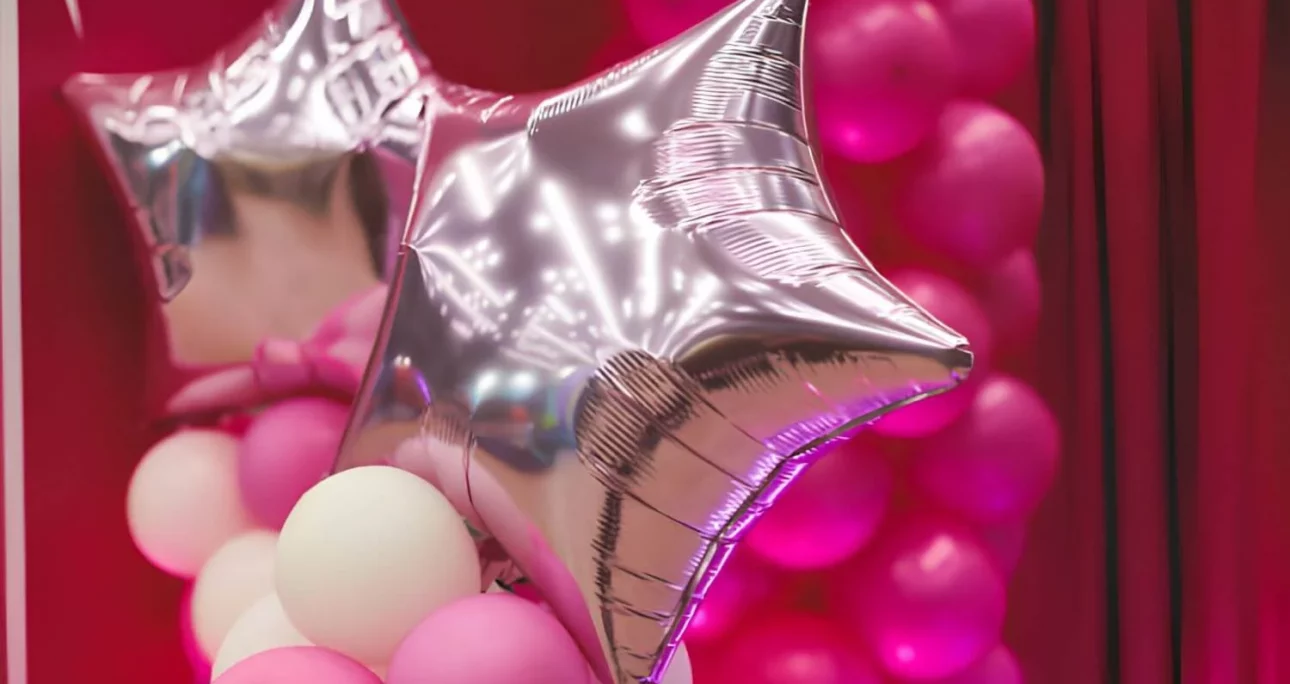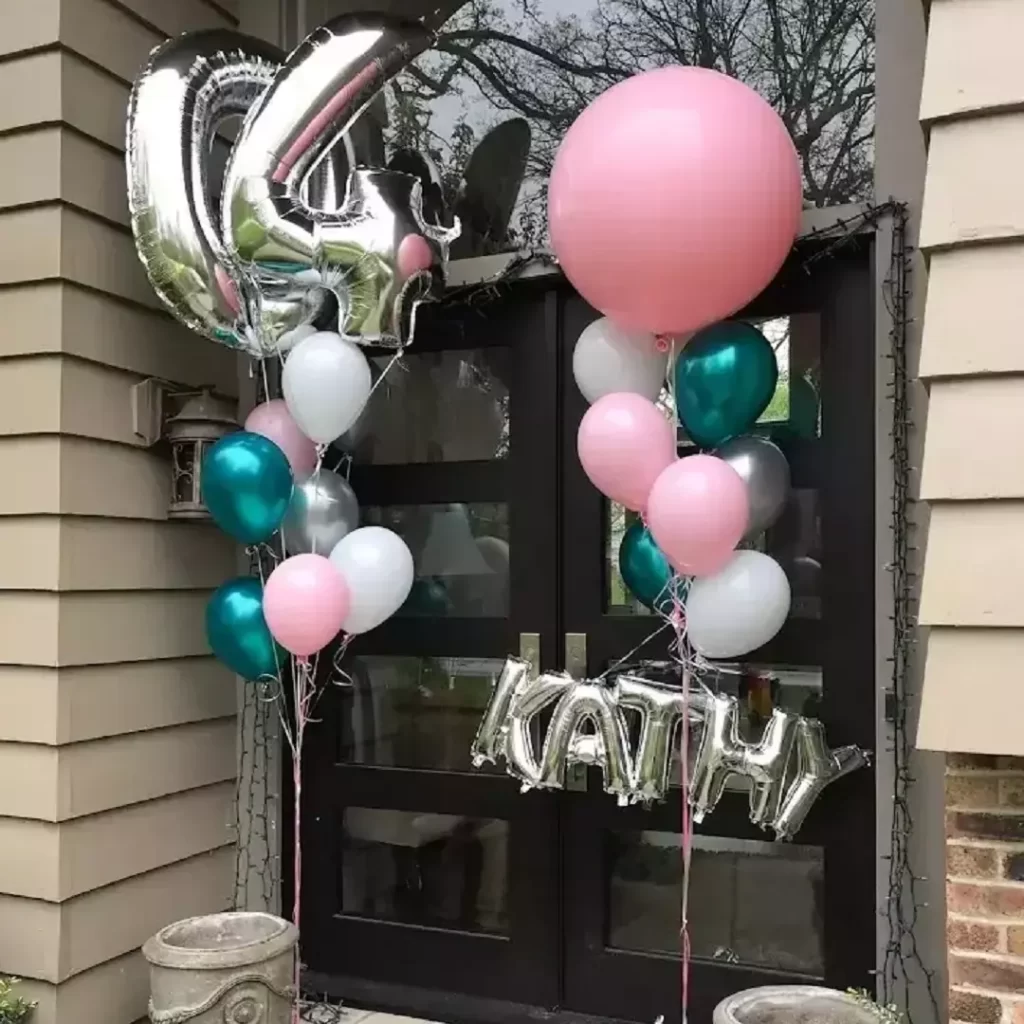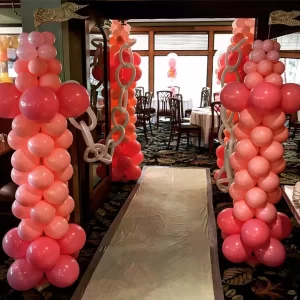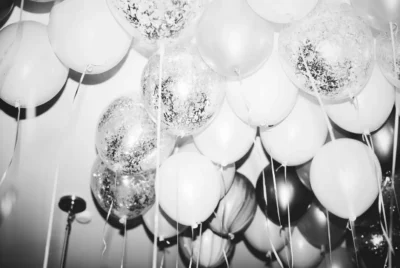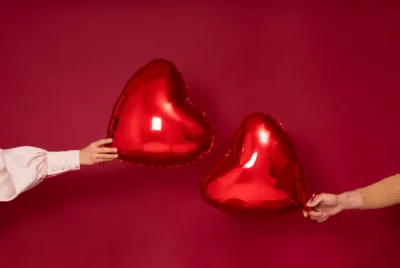Table of Contents
Party balloons, now an important detail in celebrations worldwide, have an intriguing history that dates back to their invention. This brief exploration will delve into the historical journey of party balloons, tracing their transformation from a scientific curiosity to a symbol of joy and celebration.
Who Invented Balloons and When Were They Invented?

The history of balloons started 200 years ago. Every balloon company now owes its share to one person. Balloons, as we know them today, have their roots in a scientific invention by Michael Faraday in 1824. Faraday, a renowned scientist, wasn’t thinking about parties or celebrations when he created the first rubber balloon. His goal was more scientific. He made balloons for his experiments with hydrogen at the Royal Institution in London. Faraday’s initial balloons were simple: two sheets of rubber pressed together and sealed at the edges, filled with hydrogen gas to understand its properties.
It wasn’t until the late 19th century that balloons started to evolve into the party accessories we recognize. A breakthrough came when rubber manufacturing improved, thanks to the industrial revolution. This made it easier to produce balloons more consistently and affordably. In 1825, Thomas Hancock, an English inventor and rubber manufacturer, took Faraday’s concept and started selling do-it-yourself balloon-making kits. These kits allowed people to make their own rubber balloons, and they slowly began to gain popularity for entertainment purposes.
The Rise of Popularity
Balloons history goes on. After the 1930s, balloons really started to take off (pun intended), as a popular element in parties and celebrations. This rise in popularity coincided with the mass production of latex balloons, introduced by Neil Tillotson in 1931. These balloons were more durable and flexible than their predecessors, making them ideal for party decorations and entertainment.
As manufacturing techniques improved, balloons began to come in a wide array of colors. This variety allowed people to match balloons to the themes of their parties, whether it was a simple birthday party, a wedding, or a national holiday celebration. The ability to choose from a rainbow of colors made balloons much more appealing for different types of events.
Furthermore, the sizes and shapes of balloons also diversified. There were giant balloons that made a big statement and smaller ones for more intricate decorations. Balloons shaped like hearts, stars, or even animals started to appear, matching different themes and preferences. That’s when balloons truly started to shine, and different types like party balloons, graduation balloons, birthday balloons, and so on appeared.
Latest Trends and Innovations

In recent years, balloons have seen some exciting innovations. LED balloons are one such trend. These balloons, fitted with small LED lights, create a glowing effect, adding a magical touch to evening events. They’re especially popular for outdoor parties or as part of night-time celebrations, where their luminous effect really stands out.
Giant balloons have also become a hit, particularly for milestone events like big birthdays or anniversaries. Their large size makes a bold statement and they often become the centerpiece of decorations. These oversized balloons can also be customized with messages or used in photo shoots, adding a personal touch to the celebration.
Another significant trend is the rise of eco-friendly balloons. As people become more environmentally conscious, the demand for biodegradable balloons has increased. These balloons, usually made from natural latex, are designed to break down faster than traditional balloons, reducing environmental impact.
Social media has also influenced balloon decorations. Instagrammable balloon arches, elaborate color schemes, and themed balloon setups are becoming more common, as people look to create visually appealing scenes for their social media posts. This trend towards more elaborate and unique balloon decorations is partly driven by the desire to share special moments online.
Who Made the First Floating Balloon?
The first floating balloon wasn’t exactly the kind you see at parties today, but its creation was a milestone. It was made by two brothers, Joseph-Michel and Jacques-Étienne Montgolfier, in France in 1783. These brothers weren’t working with rubber or latex; instead, they used paper and fabric to craft their invention. What made their balloon float was not helium, but hot air. They discovered that filling a bag with hot air made it rise, as hot air is lighter than cool air.
The Montgolfier brothers’ first successful public demonstration of their hot air balloon was a major event. On June 4, 1783, in the town of Annonay, France, they launched a balloon about 9 meters (30 feet) in diameter. It ascended for about 10 minutes and traveled more than a kilometer. This event marked the birth of hot-air ballooning and opened the door to future developments in aerial navigation. It was a far cry from the colorful party balloons we know today, but it was the start of humanity’s fascination with making objects float in the air.
The use of helium to fill balloons was a significant step forward in the history of balloons. The invention of the first helium balloon is credited to American chemist and physicist William Moulton Marston. Marston, better known for creating the comic book character Wonder Woman, was also involved in other inventive projects. He filled a balloon with helium for the first time around 1920.
Helium, being a lighter-than-air, non-flammable gas, was a safer alternative to hydrogen, which had been commonly used before but was highly flammable (hello, Hindenburg). The introduction of helium made balloons much safer for use, especially in public and crowded settings. This shift to helium was a game-changer, paving the way for the safe and widespread use of balloons that we see today.
A Short History of Different Balloon Materials
Here’s a brief timeline showcasing the evolution of balloon materials through different milestones:
- 1824 – Silk and Rubber. Michael Faraday first created balloons using silk and later rubber for his experiments with hydrogen.
- Late 1800s – Rubber . As rubber manufacturing improved during the Industrial Revolution, balloons began to be predominantly made from rubber, thanks to its elasticity and durability.
- 1931 – Latex . Neil Tillotson introduced the modern latex balloon, revolutionizing the balloon industry. Latex, being more flexible and easier to produce, became the standard material for party balloons.
- Late 20th Century – Mylar Balloons. Mylar, a type of metalized plastic film, was introduced. These balloons, known for their shiny, reflective surfaces, became popular for their durability and novelty shapes.
- 21st Century – Eco-friendly Alternatives. With growing environmental concerns, there’s been a shift towards eco-friendly materials like biodegradable latex and recyclable materials, focusing on sustainability while keeping the joy of balloons alive.
This story of balloon materials shows how innovation and changing societal needs have shaped the evolution of balloons from simple scientific tools to the colorful party accessories we know today.
History of Balloons - FAQ
When Were Party Balloons Invented?
Party balloons, as we know them today, were first created in the 1820s by Michael Faraday, a British scientist. He used rubber-coated bags for experiments, which later inspired the modern party balloon.
What Were the First Balloons Made Of?
The earliest balloons were made of rubber. Before that, animal bladders and intestines were used as inflated objects for various purposes, including celebrations.
How Did Balloons Become Popular for Parties?
In the 20th century, manufacturers began producing latex balloons in various colors and shapes, making them affordable and accessible for celebrations. Their vibrant appearance and ability to float with helium captured people’s imaginations, turning them into party staples.
Who Invented the First Latex Balloons?
The first latex balloons were invented by Neil Tillotson in 1931. He created them from liquid latex and shaped them into the forms we see today.
What are Some Unique Uses of Balloons Throughout History?
Balloons have been used in scientific experiments, military applications, and even in medical procedures. However, their most famous use remains as decorations for parties and events.

